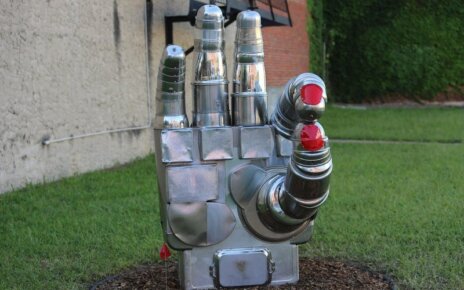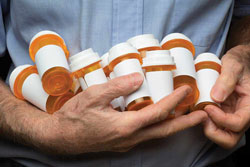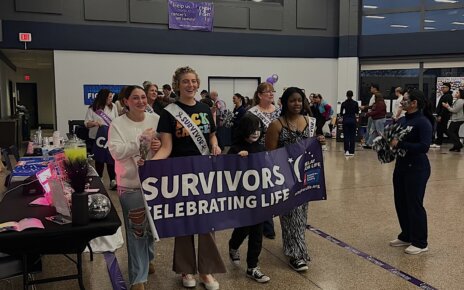Examining the Road Taken by Pre-Med Students
 Students planning to apply to medical school will partake in a journey while at the University that includes student-created clubs and faculty-made committees.
Students planning to apply to medical school will partake in a journey while at the University that includes student-created clubs and faculty-made committees.
Aside from the core classes that biology majors are expected to take and maintaining a GPA of 3.5, students have to take the Medical College Admission Test (MCAT). The MCAT, according to the Association of American Medical Colleges, is a standardized multiple choice test that includes problem solving, critical thinking, writing skills and knowledge of science concepts and principles that serve as prerequisites to the study of medicine.
In order to assist students planning to attend medical school, the University’s School of Science formed the Pre-Professional Health Advisory Committee (PPHAC). The PPHAC, formed in 1974 by Dr. James Mack, Director of the PPHAC, and Dr. Dorothy Parker, is responsible for guiding students into careers related to medicine, dentistry, veterinary science and other allied health professions.
“We advise students who are interested in medical school, dental school, vet school, physician assistant programs, physical therapy, osteopathic medicine [and] occupational therapy,” Mack said. “We have one of the best programs in the country, not just in the state. I started this in 1974 with Dr. Parker. There is probably no other program in the country that has somebody on continuously for 38 years. Our other faculty members on the committee are very dedicated to helping the students.”
The faculty members present on the committee include Dr. James Konopack, Assistant Professor of Nursing and Health Studies, Dr. Massimiliano Lamberto, Assistant Professor of Chemistry, Dr. Datta Naik, Professor of Chemistry, Vice Provost and Dean of Graduate School and Continuing Education, and secretary Barbara Santos.
“The committee members, they really work hard, and they don’t get paid because they really want to help the students,” Mack said.
“The PPHAC is a committee of faculty that is in charge of relations, our medical school image, and our letters of recommendation,” said Brandon Hayes, a junior. “Once a semester, they organize a giant meeting with a bunch of speakers. They find us internships and shadowing and they also organize agreements and affiliations to help out students with post-undergraduate schooling.”
James Atherton, a junior, described the PPHAC meetings as open for all those interested in attending and a good way for students to speak with professionals and gain insight as to what to expect once they are in medical school.
“AED is an honors society for those interested in applying to a health profession,” Atherton said. “The group helps with MCAT studies and looks nice on a resume. It also introduces students to the requirements of the exam.”
In addition to the PPHAC, students have gone out of their way to prepare for taking the MCATs by forming a chapter of Alpha Epsilon Delta (AED) on the University campus. According to the mission statement, “Alpha Epsilon Delta is the National Health Pre-Professional Honor Society dedicated to the encouragement and recognition of excellence in pre-professional health scholarship. AED offers opportunities for intellectual and professional development, provides a forum for students with common interests and extends a program of service to benefit the University community.”
“On the University’s campus, we provide an environment for students to foster their integrity, leadership, teamwork and professionalism,” said Bryan Martin, a senior and President of AED. Martin then provided details of a fundraiser that members of AED took part in in response to the concern for a University student.
“Earlier this year, Rachel Van Beke approached me because she was deeply distraught over the unfortunate burns suffered by fellow student Kelly Boozan after a Halloween fire and thus she and her friend Jenny Phelan organized a Polar Plungaplooza to raise funds for Kelly and her family,” Martin explained.
AED meets biweekly. As of yet, the group has not been approved as an official club on the University’s campus. However, the members of the group have applied and are awaiting approval by the national committee.
As of 2010, 87 percent of University students had been accepted into medical school such as Drexel University College of Medicine, Columbia University College of Physicians and Surgeons, Johns Hopkins University School of Medicine and many more.
Mack has realized through his experience that the University is rare in its dedication to its students interested in medicine.
“We have more experience than any other school,” he continued. “People who would be on a committee like this would perhaps do it for a couple of years then they’d do something else. They don’t have the experience that we have. My involvement is continuous; it’s been 38 years. To be a student and really interested in one of the health professions, you’re not going to find a better place than this. And I’m not just saying this; it’s really the truth. I’ve gone to meetings where people are asking questions that we answered 15 years ago.”
Martin agrees that the University helps its students prepare but also states that students must help themselves if they expect to reach their end goal.
“I think Monmouth is a fantastic institution and that I have been very privileged to attend. With this being said, no one is going to force-feed you the material,” Martin said. “You are not going to learn the material through osmosis or some other passive method; you have to engage in class and be diligent about completing assignments. If you want to be a doctor you have to go out and get it.”



